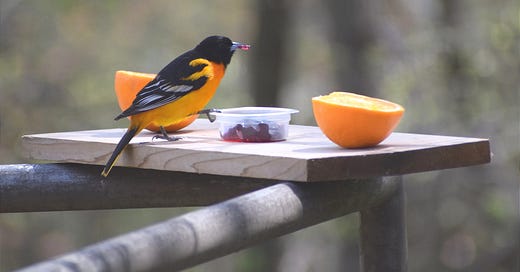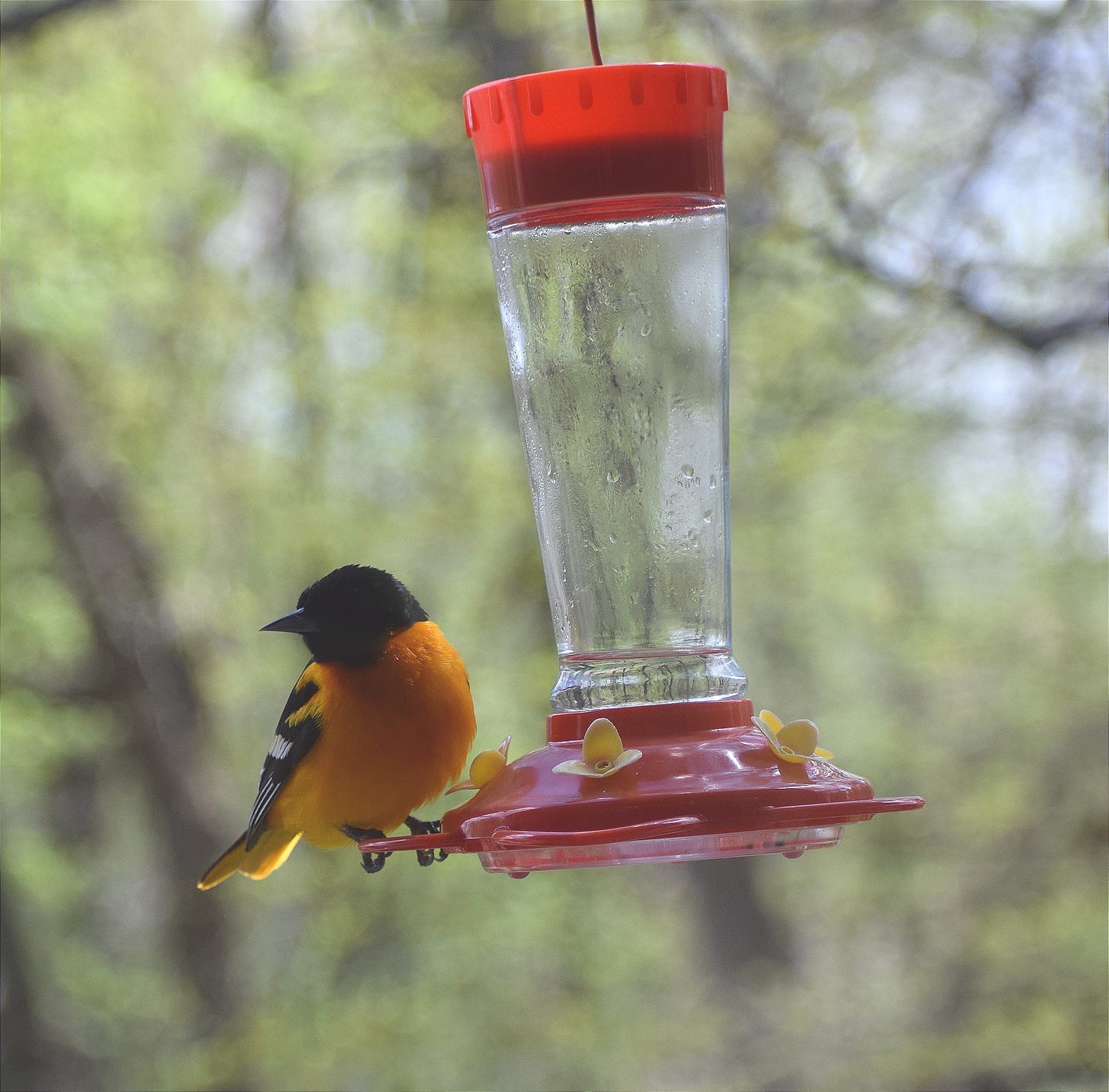In central Minnesota, the first week of May heralds the arrival of both hummingbirds and orioles to the backyard. Often times I hear the orioles first as they will announce their arrival with a strong chattering song. I have purchased an assortment of oriole feeders in the past but tend to like my simple makeshift one that has both a jelly container and oranges secured on a wood plank attached to my deck.

I feed orioles for just a few weeks in May because once the weather warms they start nesting and rely on an insect diet to feed their young. At that point they do not need supplemental food especially one high in sugar.
Speaking of sugar, these high-energy birds thrive on it. Hummingbirds rely on flower nectar which is a combination of three sugars; glucose, fructose, and sucrose. Hummingbird food for feeders is properly made from refined white sugar dissolved in warm water at a ratio of 1 cup sugar to 4 cups water. Fill the feeder only enough for a few days, keep the extra syrup in the refrigerator and refresh the feeders every few days or when the water looks cloudy. No need to add red food dye and do not use “organic” sugar for the mix as that will spoil quickly.
The female hummingbird does all the nest building and raising of young. She feeds the chicks a regurgitated mix of insects and nectar several times a day. When most flowers are in full bloom in July, the hummingbirds will not use the feeders as much but will be back regularly in August to fuel up for fall migration.
Our feeders can help especially during cold spells in spring but they are not a good substitute for a healthy insect population. Most songbirds are dependent on insects including caterpillars for raising young and providing a high protein sustenance. Nothing can replace the nutrients insects provide and therefore are essential components for the survival of healthy bird populations. A world of reduced insect populations will be a world less diverse of birds.







Good info. Helpful!